In the realm of avian predators, few possess the awe-inspiring visual prowess of the eagle. With eyesight that seems almost superhuman, these majestic creatures can spot prey from astonishing distances.
It is often said that eagles have eyes like a hawk, but their vision goes far beyond that.
In fact, the eagle’s ability to detect the tiniest of creatures, such as a mouse, from great heights is nothing short of extraordinary.
This article delves into the remarkable eyesight of eagles, exploring the anatomy of their vision, their hunting techniques, and the variations in visual acuity among different eagle species.
Furthermore, we will compare eagle vision to that of humans, shedding light on the immense disparity between the two.
Understanding the role of vision in eagle conservation is crucial for protecting these magnificent birds and ensuring their continued freedom in the wild.
Prepare to be captivated by the fascinating facts surrounding eagle vision, as we unravel the secrets behind their incredible ability to see a mouse from seemingly unimaginable distances.
Table of Contents
- 1 Key Takeaways
- 2 How Far Can An Eagle See A Mouse
- 3 The Remarkable Eyesight of Eagles
- 4 Anatomy of an Eagle’s Vision
- 5 Spotting Prey from Great Distances
- 6 Precision and Accuracy in Targeting
- 7 Hunting Techniques of Eagles
- 8 Adaptations for Spotting Small Prey
- 9 Variations in Visual Acuity among Eagle Species
- 10 Comparing Eagle Vision to Human Vision
- 11 The Role of Vision in Eagle Conservation
- 12 Fascinating Facts about Eagle Vision
- 13 Frequently Asked Questions
- 13.1 How do eagles locate their prey while flying at high altitudes?
- 13.2 What are the different hunting techniques used by eagles to catch small prey?
- 13.3 Are there any specific adaptations in an eagle’s eyes that help them see small prey from great distances?
- 13.4 How does an eagle’s visual acuity compare to that of other birds of prey?
- 13.5 Are there any conservation efforts focused on protecting the eagle’s vision?
- 14 Conclusion
- 15 Author
Key Takeaways
- Eagles have remarkable visual acuity and can spot prey from great distances.
- Their eyes are large and positioned forward on their head, providing binocular vision and depth perception.
- Eagles have a higher number of photoreceptor cells called cones in their retinas, enhancing their ability to detect colors and see fine details.
- Eagles’ visual system allows them to perceive a wide range of colors and see in low light conditions.
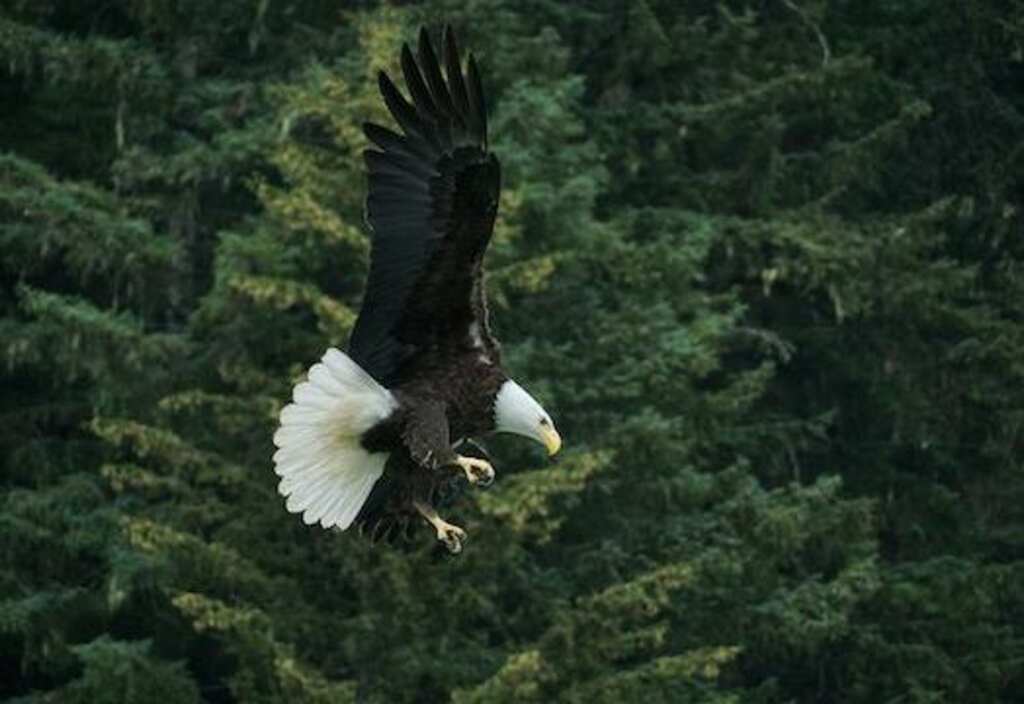
How Far Can An Eagle See A Mouse
An eagle’s exceptional vision enables it to spot prey, including mice, from remarkable distances. With its keen eyesight, an eagle can see a mouse on the ground from up to a mile away. This remarkable visual acuity aids them in hunting and ensures they can identify even small targets with precision and efficiency.
The Remarkable Eyesight of Eagles
The exceptional visual acuity possessed by eagles enables them to spot even the tiniest prey, such as a mouse, from great distances, evoking a sense of awe and admiration for these majestic creatures.
Eagles have evolved a remarkable eyesight that allows them to see with incredible clarity and detail.
Their eyes are large and positioned forward on their head, providing them with binocular vision and depth perception.
Moreover, eagles have a higher number of photoreceptor cells called cones in their retinas, which enhance their ability to detect colors and see fine details.
These adaptations enable eagles to scan the landscape and spot potential prey, like a mouse, with precision and accuracy.
However, despite their incredible vision, eagles face various conservation threats, including habitat loss and pollution, which can impact their ability to hunt effectively.
Transitioning into the subsequent section about the anatomy of an eagle’s vision, it is important to understand the intricate mechanisms that allow these birds to see with such clarity.
Anatomy of an Eagle’s Vision
The anatomy of an eagle’s vision is remarkable, enabling them to excel in their hunting abilities.
Firstly, their binocular vision and depth perception allow them to accurately judge distances and accurately strike their prey.
Secondly, eagles have a high density of photoreceptors in their retinas, which enhances their visual acuity and allows them to detect even the slightest movements of their prey.
Lastly, eagles have the ability to see ultraviolet light, which provides them with an advantage in locating prey that may be camouflaged or hidden from human eyes.
Binocular Vision and Depth Perception
Binocular vision and depth perception, key factors in an eagle’s visual prowess, enable it to accurately assess the distance to its prey with remarkable precision.
This remarkable ability is due to the positioning of the eagle’s eyes on the front of its head, providing a wide field of view and overlapping visual fields.
The brain then processes the slightly different images received from each eye, allowing the eagle to perceive depth and distance. To better understand this phenomenon, consider the following table:
| Factor | Description |
|---|---|
| Binocular vision | The ability to merge the images from both eyes into a single, three-dimensional perception, providing depth perception. |
| Depth perception | The ability to accurately judge the distance between objects in the environment, allowing eagles to pinpoint the location of their prey with astonishing accuracy. |
This binocular vision and depth perception is further enhanced by the high density of photoreceptors in the eagle’s retina, allowing for heightened visual acuity. This exceptional visual system enables eagles to spot even the smallest movements from great distances.
High Density of Photoreceptors
With an abundance of photoreceptors densely packed in their retinas, eagles possess a visual system that is akin to a high-resolution camera capturing intricate details of their surroundings.
This high density of photoreceptors allows eagles to perceive the world with exceptional clarity and precision.
Their retinas contain a large number of cones, the photoreceptor cells responsible for color perception, which enables them to discern a wide range of colors in their environment.
Additionally, eagles have a higher density of rods, another type of photoreceptor cell, which enhances their ability to see in low light conditions.
This combination of high resolution and color perception gives eagles a visual acuity far superior to that of humans.
Transitioning into the subsequent section about their ability to see ultraviolet light, this remarkable visual system allows eagles to perceive a spectrum of light that is invisible to the human eye.
Ability to See Ultraviolet Light
Eagles’ exceptional visual system extends beyond the visible spectrum, as they possess the ability to perceive ultraviolet light. This unique perception allows them to have an advantage in prey detection.
Ultraviolet light perception enhances their ability to spot small mammals, such as mice, which can reflect ultraviolet light.
By being able to see in the ultraviolet range, eagles can differentiate between prey and the surrounding environment more effectively.
The ability to perceive ultraviolet light also aids in identifying potential threats or competitors, as certain plumage patterns and markings become more visible in this range.
This heightened visual perception contributes to the eagle’s remarkable skill in spotting prey from great distances, a skill we will explore in the subsequent section about their exceptional eyesight.
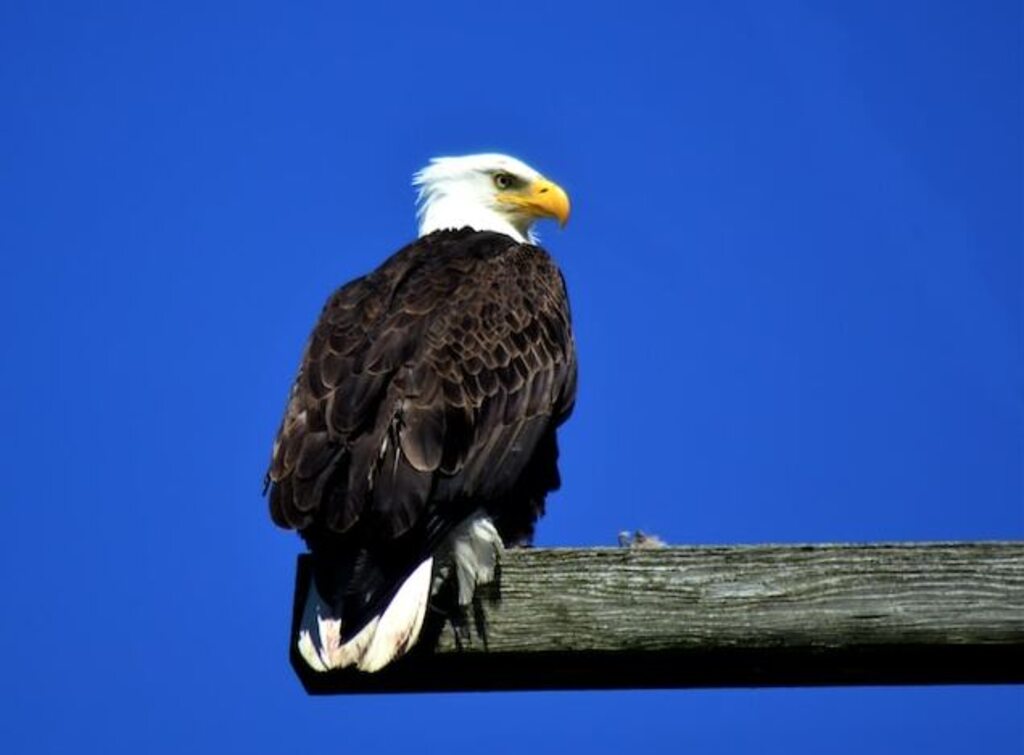
Spotting Prey from Great Distances
This discussion will focus on estimating the maximum range at which an eagle can spot its prey and the various factors that can affect visibility.
Estimating the maximum range of an eagle’s vision is a complex task due to the interplay of multiple factors such as the size and movement of the prey, atmospheric conditions, and the eagle’s visual acuity.
Additionally, factors like the elevation and angle of the eagle’s perch and the surrounding vegetation can also influence visibility.
Estimating the Maximum Range
The maximum range at which an eagle can see a mouse can be estimated by considering the eagle’s visual acuity and the size of the mouse.
Eagles have remarkable visual acuity, with some species having up to 20/2 vision, meaning they can see at 20 feet what a normal human can see at 2 feet.
This exceptional eyesight allows them to spot small prey from great distances.
The size of the mouse also plays a crucial role in determining the maximum range. Larger mice are more easily visible to eagles, increasing the range at which they can be detected.
However, variations in visual acuity among individual eagles and environmental factors such as lighting conditions and background clutter can influence the actual maximum range.
Understanding these factors that affect visibility is essential for accurately estimating the eagle’s ability to spot a mouse.
Factors that Affect Visibility
Factors such as lighting conditions, individual variations in visual acuity, and the presence of background clutter can significantly impact the ability to spot small prey from a distance.
The visibility of a mouse to an eagle depends on various factors that affect the eagle’s ability to detect and track the prey.
Lighting conditions play a crucial role in visibility, as bright sunlight can enhance the eagle’s vision and increase the range at which it can spot a mouse.
On the other hand, low light conditions or dense foliage can hinder visibility and reduce the range.
Additionally, individual variations in visual acuity among eagles can also impact their ability to detect small prey.
The presence of background clutter, such as tall grass or vegetation, can further complicate visibility by obstructing the line of sight.
Understanding these factors and their impact on visibility is essential for studying the precision and accuracy in targeting prey.
Precision and Accuracy in Targeting
Precision and accuracy in targeting are crucial elements in an eagle’s visual prowess, allowing them to effortlessly spot and track even the tiniest of prey, such as a mouse, from remarkable distances.
Eagles possess remarkable visual acuity, with their large eyes and specialized retinas enabling them to detect fine details and small movements.
Their ability to focus sharply on a specific target is enhanced by a high density of photoreceptor cells in their retinas, maximizing their ability to perceive subtle variations in light and shadow.
This targeting precision is further enhanced by their keen depth perception and exceptional ability to judge distances accurately.
By combining these visual attributes, eagles can precisely calculate the distance and trajectory necessary to effectively capture their prey.
Transitioning into the subsequent section about the hunting techniques of eagles, their precision and accuracy in targeting form the foundation for their successful hunting strategies.
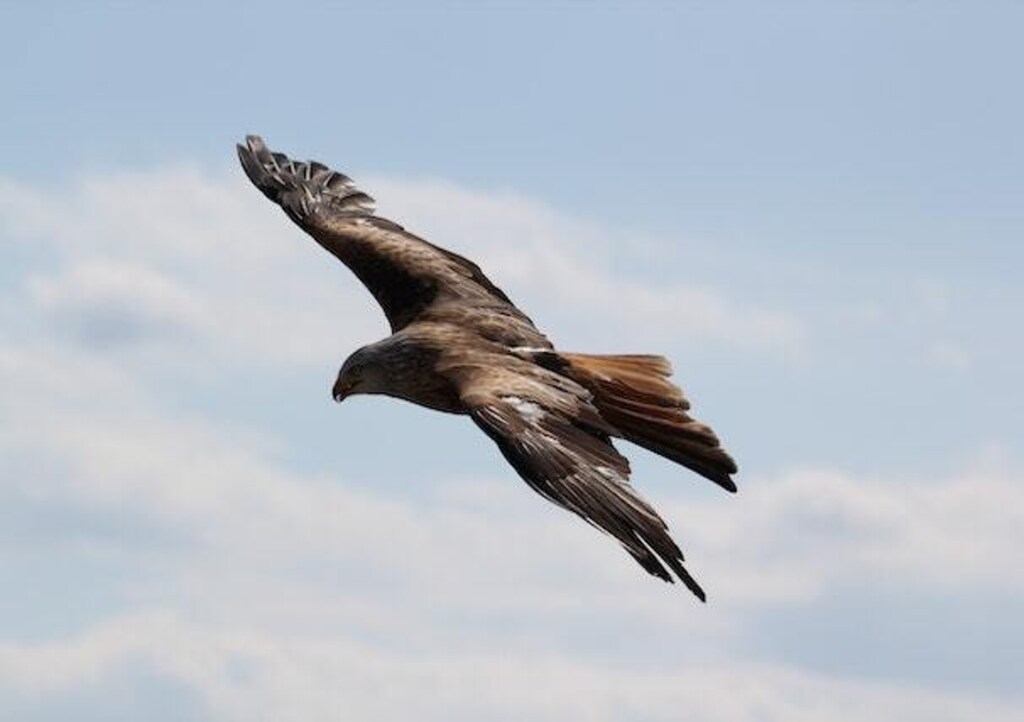
Hunting Techniques of Eagles
The precision and accuracy in targeting exhibited by eagles are the result of their exceptional hunting techniques. These majestic birds employ a variety of strategies to ensure successful prey detection and capture.
Eagles primarily rely on their remarkably acute vision, which enables them to spot small prey from great distances.
By utilizing their keen eyesight, eagles are able to scan vast areas, detecting even the slightest movements of potential prey.
Additionally, eagles employ a combination of perching and soaring techniques to optimize their hunting success.
They often perch on elevated vantage points, allowing them to survey the surrounding landscape and identify potential targets.
Once a prey is spotted, eagles swiftly dive or glide towards their target with astonishing speed and precision.
This remarkable combination of hunting strategies and prey detection allows eagles to effectively secure their next meal.
Transitioning into the subsequent section about ‘adaptations for spotting small prey,’ it is important to understand the remarkable visual capabilities of eagles.
Adaptations for Spotting Small Prey
One fascinating aspect of eagles’ visual capabilities is their ability to detect prey as small as a grasshopper from over a mile away. This remarkable feat is made possible by their adaptations for spotting small prey.
Eagles have keen eyesight, with eyes that are larger and more powerful than those of humans.
They also have a high number of light-sensitive cells called cones in their retinas, which enable them to see fine details and colors with great clarity.
Additionally, eagles have adaptations for camouflage, such as specialized feathers that help them blend into their surroundings and remain undetected by their prey.
These adaptations, combined with their hunting strategies, allow eagles to effectively locate and capture small prey.
Transitioning into the subsequent section about variations in visual acuity among eagle species, it is important to examine how these adaptations differ among different eagle species.
Variations in Visual Acuity among Eagle Species
Variations in visual acuity among eagle species play a crucial role in their ability to spot small prey. Different eagle species exhibit varying levels of eyesight capabilities, which are influenced by their specific adaptations and habitats.
For instance, the golden eagle, known for its keen vision, has eyes that are specially adapted for long-distance viewing.
This enables them to detect small prey, such as mice, from great distances.
On the other hand, the bald eagle, while also possessing excellent eyesight, primarily hunts near water bodies and relies more on its powerful beak and talons for capturing prey.
The habitat in which eagles live also impacts their vision, as factors like lighting conditions and vegetation density can affect their ability to spot prey.
Understanding these variations in eagle eyesight is important for comprehending their hunting strategies and survival in different environments.
Transitioning to the subsequent section, it is intriguing to compare eagle vision to human vision and explore the unique characteristics of each.

Comparing Eagle Vision to Human Vision
Comparatively, understanding the distinctions between eagle vision and human vision provides valuable insights into the different visual adaptations and capabilities that exist in nature.
While both eagles and humans rely on vision as their primary sense, there are significant differences in the visual acuity and hunting techniques between the two.
Eagles have a much higher density of photoreceptors called cones in their retinas, allowing them to perceive a broader range of colors and detect fine details with exceptional clarity.
In contrast, humans have a greater number of photoreceptors called rods, which enable better vision in low light conditions. To emphasize this point, consider the following table:
| Eagles | Humans | |
|---|---|---|
| Cones | High density | Lower density |
| Rods | Lower density | High density |
| Color Vision | Broad range of colors | Limited color range |
This table clearly demonstrates the differences in visual adaptations between eagles and humans. Moving forward, understanding the role of vision in eagle conservation is crucial for developing effective strategies to protect and preserve these magnificent creatures in their natural habitats.
The Role of Vision in Eagle Conservation
The role of vision plays a crucial role in eagle conservation. It helps in understanding the threats faced by eagle populations.
By studying their visual capabilities, researchers can gain insights into the challenges eagles face in their natural habitats and the potential impact of human activities on their populations.
Conservation efforts aim to mitigate these threats and protect eagle populations through various measures.
These measures include habitat preservation, wildlife management, and public education.
Ongoing research on eagle vision and conservation strategies continues to contribute to the understanding and protection of these majestic birds.
Threats to Eagle Populations
Threats to eagle populations have been likened to a dark cloud looming over their survival. The loss and degradation of eagle habitats due to human activities, such as deforestation and urbanization, pose significant challenges to their populations.
Additionally, climate change has emerged as a major threat, impacting eagle habitats and their food sources.
Rising temperatures, changing precipitation patterns, and increased frequency of extreme weather events all contribute to the decline in suitable eagle habitats and the availability of prey.
These threats not only affect the current eagle populations but also hinder their ability to adapt and survive in the future.
Conservation efforts and research play a crucial role in addressing these challenges and ensuring the long-term survival of eagles.
By understanding the threats they face and implementing effective conservation strategies, we can work towards securing a brighter future for these majestic birds.
Conservation Efforts and Research
Conservation efforts and research play a pivotal role in safeguarding the future of eagle populations by addressing the challenges they face and implementing effective strategies to ensure their long-term survival.
To achieve this goal, scientists and conservationists employ various conservation strategies and population monitoring techniques.
These include:
- Habitat preservation: Protecting and restoring eagle habitats is crucial for their survival. This involves identifying key nesting sites and implementing measures to mitigate habitat destruction or degradation.
- Mitigating threats: Efforts are made to minimize human-induced threats such as habitat loss, pollution, and collisions with power lines and wind turbines. This may involve implementing regulations, raising awareness, and developing technologies to minimize these risks.
- Captive breeding and reintroduction programs: In cases where eagle populations are critically low, captive breeding and reintroduction programs are implemented to boost their numbers and genetic diversity.
- Collaborative research: Collaboration between scientists, conservation organizations, and government agencies is essential for gathering data, conducting research, and sharing knowledge to inform conservation efforts.
These conservation strategies and population monitoring techniques are crucial for the long-term survival of eagle populations. They help ensure that these majestic creatures continue to thrive in their natural habitats.
Transitioning to the subsequent section about fascinating facts about eagle vision, it is remarkable how their conservation efforts have also shed light on their exceptional visual capabilities.
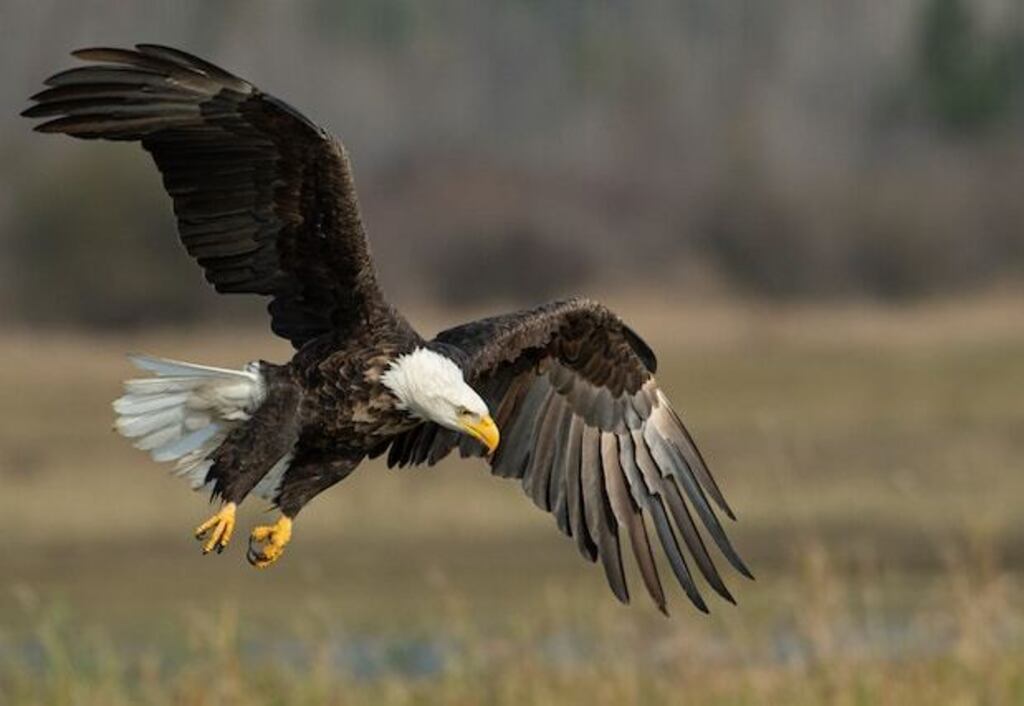
Fascinating Facts about Eagle Vision
Remarkably, the visual acuity of eagles enables them to spot a minuscule mouse from a distance that surpasses our comprehension.
Eagle vision has been a subject of extensive research, particularly in understanding how these birds are able to locate prey while in flight.
Studies have revealed that eagles possess a remarkable ability to detect even the slightest movements, allowing them to spot prey from great distances.
Their vision is so acute that they can see small details from a distance of up to two miles away. To put this into perspective, imagine a football field.
From one end zone to the other, an eagle could spot a tiny mouse scurrying across the field.
This incredible visual capability is largely attributed to the structure of their eyes and the high concentration of light-detecting cells in their retinas.
The following table provides a comparison between the visual acuity of an eagle and that of a human:
| Eagle Vision | Human Vision |
|---|---|
| Up to 2 miles | Up to 0.25 miles |
| Can detect small movements | Difficulty in detecting small movements |
| Highly sensitive to light | Less sensitive to light |
These facts highlight the astonishing capabilities of eagle vision, allowing them to dominate the skies and successfully hunt their prey.
Frequently Asked Questions
How do eagles locate their prey while flying at high altitudes?
Eagles employ a variety of hunting strategies to locate prey while flying at high altitudes. These include visual scanning, aerial acrobatics, and utilizing environmental factors such as wind patterns and terrain to enhance prey detection.
What are the different hunting techniques used by eagles to catch small prey?
Eagles employ a diverse array of hunting techniques to capture small prey. These include aerial hunting, perch hunting, stooping, and ambushing. Their remarkable prey detection abilities enable them to spot elusive targets from great distances.
Are there any specific adaptations in an eagle’s eyes that help them see small prey from great distances?
The eagle’s visual acuity, combined with its hunting techniques, allows it to spot small prey from great distances. Specific adaptations in an eagle’s eyes, such as their large size and specialized retina, contribute to their exceptional long-range vision.
How does an eagle’s visual acuity compare to that of other birds of prey?
The eagle’s eyesight is among the most remarkable in the avian world. In comparison to other birds of prey, the eagle’s visual acuity is exceptional, enabling it to spot prey from great distances.
Are there any conservation efforts focused on protecting the eagle’s vision?
Conservation efforts focused on protecting the eagle’s vision aim to ensure the long-term survival of these birds by addressing threats such as habitat loss, pollution, and human disturbances. These efforts involve research, habitat restoration, public awareness campaigns, and legal protections.
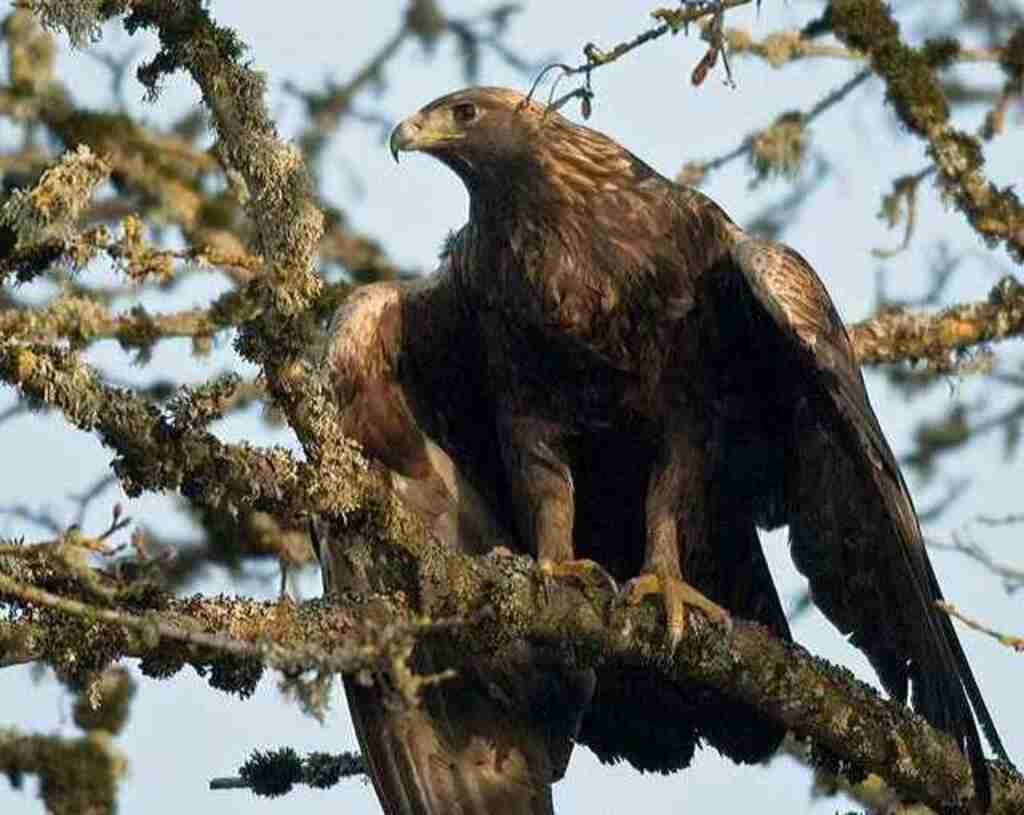
Conclusion
In conclusion, the remarkable eyesight of eagles is truly awe-inspiring. Their anatomy allows them to spot prey from great distances, displaying precision and accuracy in targeting.
Different eagle species have varying levels of visual acuity, highlighting the diversity within these magnificent birds.
When comparing eagle vision to human vision, it becomes clear that eagles possess a superior ability to perceive their surroundings.
Understanding the role of vision in eagle conservation is crucial for their protection.
Overall, the fascinating facts about eagle vision illuminate the extraordinary capabilities of these majestic creatures, leaving us in awe of their visual prowess.


